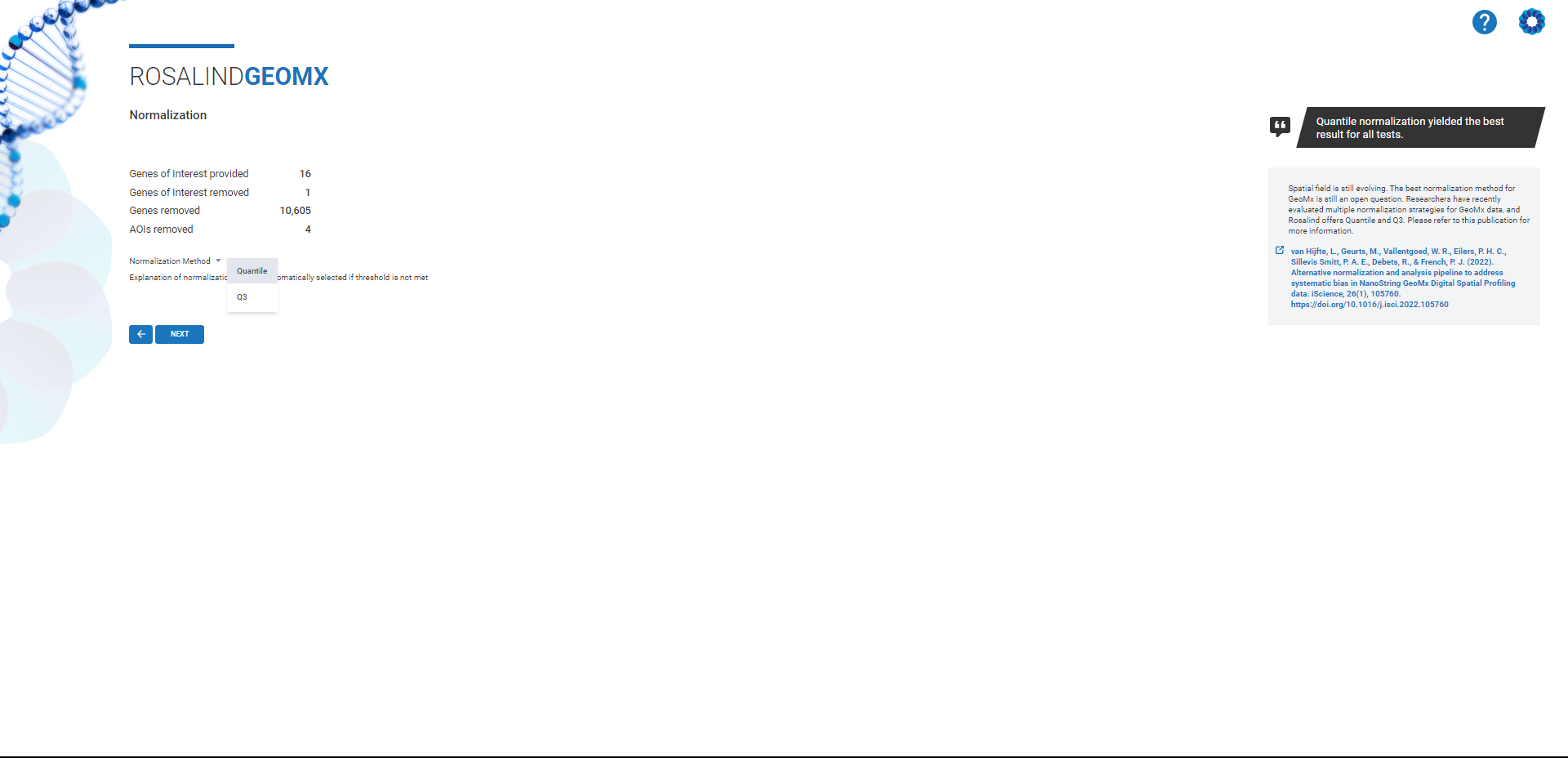The field of genomics is rapidly evolving, and tools like Rosalind are leading the charge in simplifying complex data analysis processes. Recently, Rosalind held a GeoMx Data Analysis Masterclass, aimed at educating researchers on advanced analysis techniques for gene expression data. If you missed it, here’s a summary of key takeaways from Session Two on AOI (Area of Interest) and Gene Removal.
You can watch the video, or access the replay below:
The field of spatial genomics is rapidly evolving, and tools like Rosalind are leading the charge in simplifying complex data analysis processes. Recently, Rosalind held a GeoMx Data Analysis Masterclass, aimed at educating researchers on advanced analysis techniques for gene expression data. If you missed it, here’s a summary of key takeaways from Session Two on AOI (Area of Interest) and Gene Removal.
The Importance of AOI and Gene Removal
One of the central challenges in genomics is ensuring the accuracy of data analysis by filtering out low-quality data points. In the context of spatial genomics, your samples—referred to as AOIs (Areas of Interest)—represent different regions of your tissue samples. Genes that are not consistently expressed or low-performing AOIs can skew results, leading to inaccuracies and false positives in downstream analysis.
This masterclass emphasized the importance of removing low-performing AOIs and genes from datasets to improve accuracy and robustness, which ultimately leads to better interpretation and reliable results.
Why Remove Low-Performing AOIs and Genes?
In genomics data analysis, removing poorly performing AOIs and junk genes is crucial for several reasons:
- Improves Data Quality: By removing data points that fall below the Limit of Quantitation (LOQ), researchers can ensure more precise, trustworthy data.
- Increases Confidence in Results: Reducing background noise allows for a more accurate interpretation of gene expression, which is essential for making meaningful discoveries.
- Reduces False Positives: By cleaning up data, researchers can prevent the inclusion of irrelevant or false signals, which may otherwise lead to incorrect conclusions.
Calculating Limit of Quantitation (LOQ)
The Limit of Quantitation (LOQ) is a critical measure in spatial data analysis, as it helps determine which genes are expressed with confidence. LOQ is calculated based on the geometric mean and standard deviation of negative probe counts in the dataset. The purpose is to filter out genes that are too close to the background noise level, ensuring that only genuinely expressed genes are analyzed.
AOI and Gene Detection Thresholds
One of the unique features of Rosalind is its ability to visualize data at various detection thresholds, giving researchers greater control over which AOIs and genes to include or exclude. The gene detection threshold allows users to set a percentage of genes that must be expressed above LOQ for an AOI to be considered valid. Similarly, an AOI detection threshold helps identify and remove low-performing genes.
This flexibility ensures that researchers can tailor their analysis to their specific data models—whether they’re dealing with heterogeneic or homogeneic datasets—and make informed decisions about which data to retain.
Key Tools for AOI and Gene Removal
- Grubb’s Outlier Test: This is automatically performed in Rosalind to identify outliers in the negative probe counts, ensuring that background noise is accurately accounted for.
- Gene Preservation Lists: Users can create custom gene lists to ensure that critical genes of interest are not removed from the analysis, even if they fall below detection thresholds.
- Visualized Data Thresholding: Rosalind allows users to visualize how many genes or AOIs fall above or below set thresholds, providing an easy way to adjust parameters and optimize data quality.
Conclusion
Rosalind’s powerful tools are helping to make genomics data analysis more accessible, accurate, and user-friendly. The GeoMx Data Analysis Masterclass is an excellent resource for both novice and experienced researchers, providing deep insights into optimizing their analysis pipeline.
The next session of the Masterclass will cover Normalization Selection, followed by Spatial Differential Expression. Be sure to mark your calendars for these important topics, which will further enhance your ability to harness the full potential of your data with Rosalind.
About Dr. Jessica Noll
Jessica Noll received her Ph.D. from UC Riverside in Biomedical Science. She has expertise in spatial biology, immunohistochemistry, and neuropathology with multiple publications in spatial biology and data analysis. She has previous experience as a NanoString Field Application Scientist, and has a keen understanding and passion for spatial project design and data troubleshooting.











.png)


.png)
